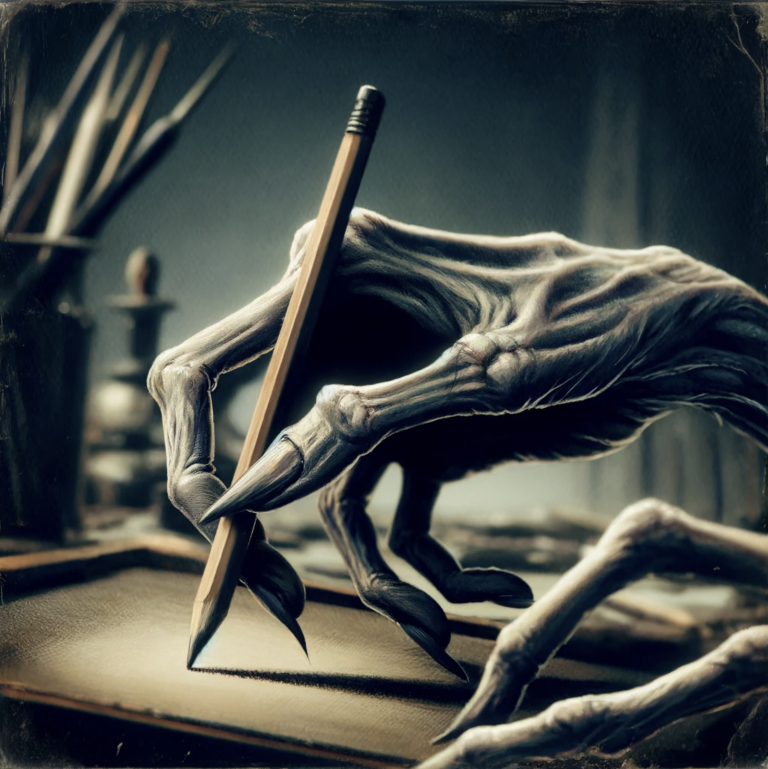
Gone are the days when the humble pencil and sketchpad were the primary tools of artists, sculptors, and designers. The smell of graphite and the feel of paper under fingertips evoke a sense of nostalgia for a bygone era where manual drawing was not only a skill but an intimate part of the creative process. However, in the whirlwind of technological advancement, these traditional techniques seem to be fading into the background. As we embrace the digital age with its myriad of tools and technologies, we must ponder the impact on the foundational drawing skills that have shaped artistic expression for centuries.
The Golden Age of Hand Drawing
Throughout history, hand drawing has been revered as the cornerstone of artistic expression, with roots stretching back to the Renaissance. It was during this era that masters like Leonardo da Vinci elevated drawing to a form of high art, using it to explore the human form, nature, and the sciences. In the 19th century, artists like Edgar Degas were celebrated for their deft pencil strokes capturing movement and expression. This historical reverence highlights how integral hand drawing has been to the development of art.
Art schools traditionally started students on rigorous drawing courses, drilling the fundamentals of shadow, perspective, and anatomy. These skills were once deemed essential, the foundation upon which all other artistic understanding was built. The painstaking process of mastering pencil and paper trained artists not just in technique but also in patience and observation. Thus, hand drawing developed not only skill but also a deep connection to one’s work.
In the 20th century, drawing continued to hold a place of importance. Iconic modern artists like Matisse and Picasso, despite their revolutionary approaches to art, always returned to basic drawing to conceptualize and refine their ideas. Their sketches remain a testament to the power of drawing as a tool of thought and exploration. This era demonstrated that regardless of artistic style, the ability to draw was synonymous with the ability to see the world through an artist’s eyes.
However, as the century closed, a shift began to emerge. With the advent of new technologies, the tactile connection fostered by hand drawing began to diminish. This shift was subtle at first but has become increasingly pronounced in today’s digital-heavy artistic landscape.
The Digital Revolution in Art
The digital revolution brought with it tools that transformed the canvas and pen into something limitless and instantly correctable. Graphic tablets and styluses allow artists to undo mistakes with a click, offering a sandbox of digital possibilities unattainable in the physical world. Programs like Adobe Illustrator and Procreate have opened new frontiers for creativity, making art more accessible and versatile than ever before.
Artists now have at their disposal a plethora of tools that can mimic traditional media or create entirely new forms of art. This technology enables quicker revisions and complex compositions that would be time-consuming and difficult to achieve on paper. The digital medium also facilitates a smoother transition from concept to final product, streamlining workflows and enhancing productivity.
This convenience, however, comes with potential drawbacks. The immediate gratification and ease of editing offered by digital tools can lead some to bypass the meticulous process of manual sketching. As a result, the development of fundamental drawing skills can be stunted, as digital artists may rely heavily on software capabilities rather than honing their raw drawing skills.
Moreover, the educational landscape has shifted dramatically, with art schools increasingly integrating digital art into their curriculums. While this prepares students for a digital-centric market, it may also lead to a decreased emphasis on traditional drawing classes. This trend is reshaping what it means to be skilled in the arts, as proficiency with digital tools becomes as valued, if not more so, than classical drawing ability.
Impact of Digital Tools on Hand Drawing Skills
The impact of digital tools on traditional drawing skills is multifaceted. On one hand, these tools offer incredible flexibility and the ability to experiment without wasting materials. However, they can also lead to a neglect of fundamental drawing skills. Artists might find themselves less inclined to practice drawing by hand, which can atrophy their ability to execute ideas directly from brain to paper.
Educators and veteran artists have observed a noticeable decline in the drawing abilities of younger artists. Interviews reveal a consensus that while newer artists are adept at digital manipulation, many struggle with basic sketching tasks that previous generations mastered early in their training. This gap highlights a growing concern in art education and professional circles.
The shift away from hand drawing isn’t just about the loss of a skill but also about a changed approach to creativity. Drawing by hand engages the brain differently, involving more direct coordination and sensory involvement, which can enhance conceptual thinking and problem-solving. Without regular practice, these cognitive benefits decrease, potentially leading to a less immersive creative process.
Art schools play a critical role in this dynamic, as they are the breeding grounds for future artists. As curricula evolve to include more digital-focused classes, the balance is tipping. While embracing modern tools is essential, there is a growing movement advocating for a resurgence of traditional drawing in academic settings to preserve these vital skills.
Advantages of Maintaining Hand Drawing Skills
Despite the allure of digital tools, the tangible benefits of maintaining traditional hand drawing skills are undeniable. Hand-drawn art possesses a unique, irreplaceable quality that digital art can sometimes lack. The texture of paper and the fluidity of ink or pencil strokes can convey emotion and subtlety that are difficult to replicate digitally.
Maintaining proficiency in hand drawing can significantly enhance an artist’s digital work. Understanding light, shadow, and perspective in a direct, manual way enriches digital creations, lending them a depth and realism that might otherwise be absent. Artists who excel in both arenas often find that their work is more dynamic and well-rounded.
Contemporary artists like David Hockney have embraced both worlds, using traditional techniques to inform their digital work. Hockney’s digital paintings are celebrated for their vibrant color and expressive quality, attributes he developed through decades of working with physical media. His success demonstrates that digital and traditional arts are not mutually exclusive but can be complementary.
Moreover, in a market saturated with digital images, hand-drawn artworks stand out. Collectors and galleries often value original drawings for their authenticity and the skill required to create them. This appreciation ensures that traditional drawing skills remain relevant and esteemed in the art world.
Bridging the gap
Addressing the decline in hand drawing skills involves both technological innovation and educational reform. New devices and apps are emerging that simulate the resistance and texture of paper, helping digital artists retain the tactile experience of drawing. These tools aim to merge the best of both worlds, maintaining the efficiency of digital while reintroducing the sensory feedback of traditional methods.
Educationally, there is a push to reintegrate rigorous drawing courses into art curriculums. Workshops and online courses that focus on classical drawing techniques are becoming more popular, reflecting a desire to reclaim these skills. Art schools are beginning to recognize the value of a balanced approach, ensuring students are proficient in both digital and traditional media.
Artists themselves are also taking action, with many seeking out opportunities to strengthen their drawing skills through self-directed practice or peer-led groups. Social media platforms offer a venue for artists to share and critique hand-drawn work, fostering a community that values traditional techniques.
Finally, technological advancements such as virtual reality and augmented reality offer new ways to engage with traditional drawing. These tools can provide immersive environments that teach and enhance drawing skills, bridging the gap between old and new artistic techniques.
Conclusion
As we navigate the complexities of the digital age, the importance of maintaining hand drawing skills cannot be overstated. These abilities not only enrich an artist’s toolkit but also deepen their connection to their work, fostering a fuller understanding of artistic fundamentals. By encouraging a balance between digital and traditional media, we can ensure that the art of drawing remains a vital, dynamic part of the creative world.
In this era of rapid technological advancement, let us not forget the value of a simple pencil and paper. The future of art may be digital, but its soul remains firmly in the hands of those who can wield traditional tools with confidence and creativity. What will your contribution be to this evolving landscape?




